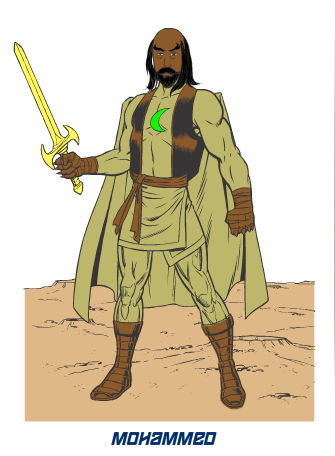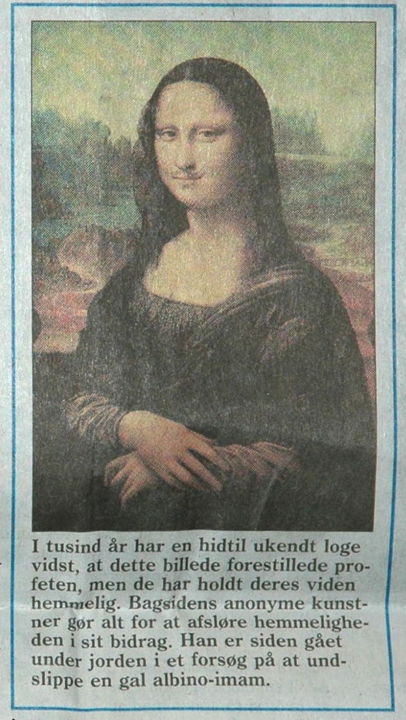



Prophet trees like the one shown in this picture are a popular subject. At the bottom of the trunk stands the name of the father of humanity and the first prophet: Adam. This is followed by the names of Islam's other prophets; Noah, Lot, Salih, Abraham, Joseph, Moses and Jesus, to name but a few. The tree is crowned by a large flower at top right. This is Muhammad. Beside his name: "The seal of the prophets and envoys (i.e. the last prophet): he was sent for all of humanity." (Purchased in Jerusalem.)Right-hand image:
More common than portraits of the Prophet Muhammad are more or less schematic representations of his family or genealogical tree, or so-called "prophet trees", where the Prophet himself may be symbolized by a calligraphic representation of the name "Muhammad", and/or a rose. In this family tree we find the Prophet's name in the middle of the upper part, with near relatives, wives and children and descendants below. The medallion in the right corner contains the sentence Allah jalli jalaluh, "God, Mighty and Glorious is He!" In the left corner medallion: "The magnificent family tree of our lord Muhammad, God's messenger, God bless him and grant him salvation, and the people of his house (his family and descendants)." Original: 50x70 cm. Purchased in Cairo in front of the Sayyidna Husain-mosque January 1988 by Richard J. Natvig.


| Mohammed | |
| Jesus | |
| Lyndon Johnson | |
| The Artist's Father | |





























| Mohammed Image Archive home page |